Jump over the line between Art and Design
Art and design, in nowadays pedagogical definition, are diverting streams – one focuses aesthetics while the other focuses application. At times, the line between the two disciplines becomes blurred, but the distinctions remain and are important to think constantly. Bauhaus Movement marks its significance in advocating an integration of fine and applied arts and redefined the relationship among art, design and industrial manufacturing techniques nearly a century ago. Decades gone by, design remains its purpose of being practical and commercial while art for art’s sake promotes the pursuit of creative expression as the singular goal that takes off in another direction.
In the exhibition curated by DMatters, we invited those normally regarded as architect, product designer, environmental designer and artist, to present their works somewhat visually artsy and somewhat design-ish. Each work intertwines with disciplines in a broad sense such as historical artifact, landscape and cityscape, humanistic qualities and ready-made objects. Does it serve a particular function to be regarded as a design object or is it an artwork?
“Balance” By Sam Fu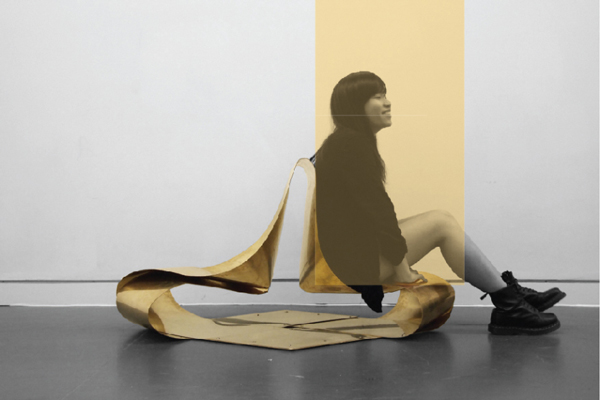 Does it serve any function?
Does it serve any function?
It acts like a wheelchair, but it serves two people at the same time.
What is the concept of this work?
"The wrestle of 2 people, neither won nor lose the struggle. The strongest power is always in the BALANCE.”
A brass sheet - a material sheet to tell stories by its changing appearance through time, memorising strength through compression or tension. This is a spatial device that records the human activities through the degree of oxidation and metal memory. Tension is created by twisting and bending when it is compressed by the users, by taking the advantages of the speciality of its bounciness, we make a device to serve 2 people for experiencing the power of compression and tension, and the power of balance.
Seesaw By Chung Wai Ian @MUDwork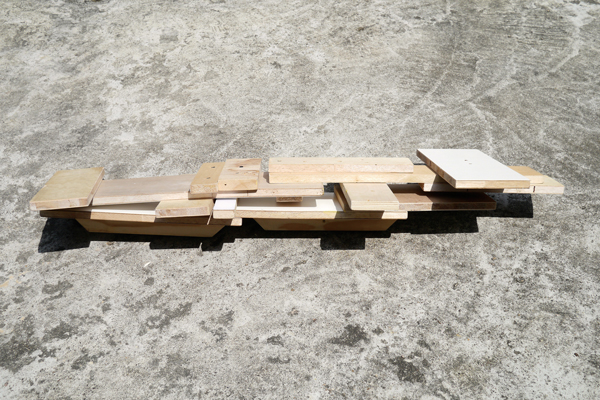 Does it serve any function?
Does it serve any function?
It serve as kids’ playground.
What is the concept of this work?
The work was carried out under the community art project “Play Depot”. This project, which organised by Kai Tak, was an open-for-all playground based in To Kwa Wan. Through “play”, the project unlocks people’s inner creative genius and imagination.
Some woodscapes at studio were brought to ʺPlay Depotʺ. Children said, ʺThere is no seesaw and we want one.ʺ. A patchwork of woodscapes was made with screws, and became part of a jungle gym. We improvised to fix the pivot and to strengthen the capacity.
“Domestic helper (dog)” By Ng Ka Chun @MUDwork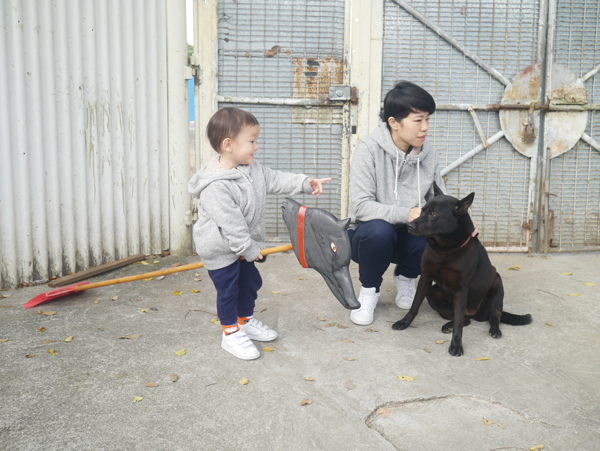 Does it serve any function?
Does it serve any function?
It is used to mop the floor or serves as a toy.
What is the concept of this work?
It was created based on the appearance of my dog. I made a hat and placed it on the broom. Kids see it as a rocking-horse-toy. And when they play it, the “dog” would not run away.
“Make and Fly a Kite When Wind Comes, for the Whole Day” By Ng Ka Chun @MUDwork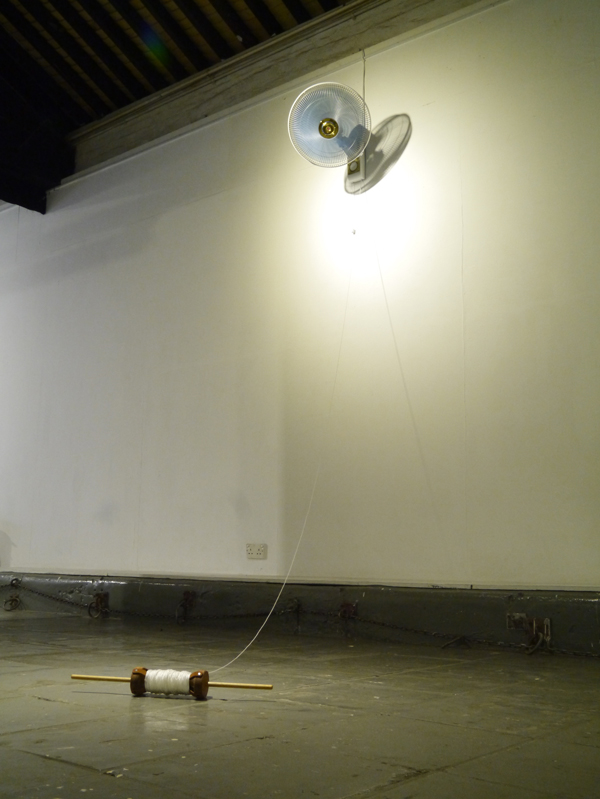 Does it serve any function?
Does it serve any function?
To turn off/ on the fan from a distance.
What is the concept of this work?
Whenever the switch of the wall-fan is pulled, we are reminded of the time of our childhood when we made our own kites by hand. After we got our kites in the air, we would tie the string to the railing. A while after, we would check if the kites are still flying.
The extended cable turns the electric fan into a kite on a landing tree, allowing people to operate it in a distance.
Breathing Mountain by Kacama Design Lab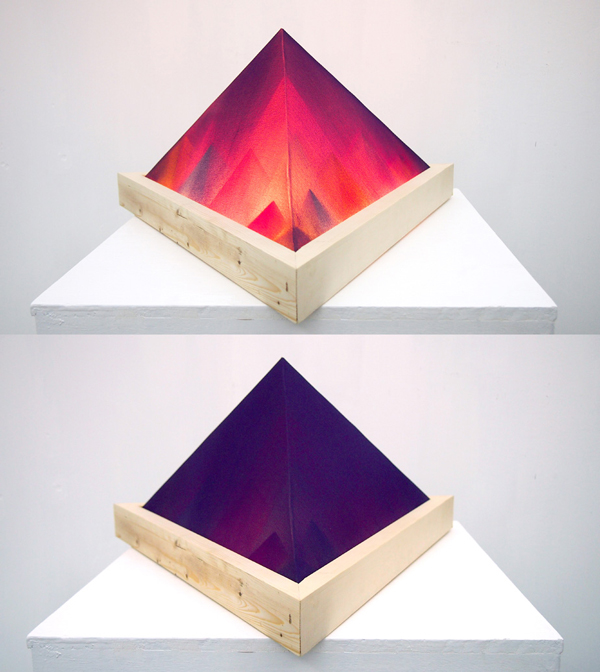 Does it serve any function?
Does it serve any function?
You can see it as a decoration, or as a lighting fixture. However, we did not give this work a specific function. The lighting part is just to present the concept of the work.
What is the concept of this work?
“Breathing Mountain” is a creation to reflect our view of the life in industrial building. This work is a purple tetrahedron consisting of pyramids in different colours and sizes. The excitement of the industrial building lies in the fact that there are different people and things happening in the same place. Everyone shares intellectual resources and talents together as to add value to the place.
Ocean Cube By LAAB Architects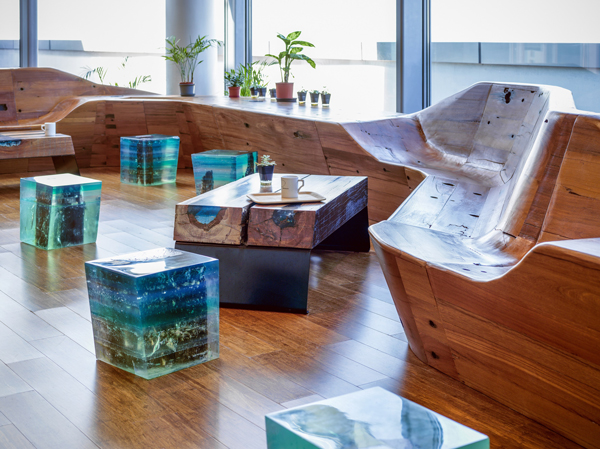 Does it serve any function?
Does it serve any function?
Ocean Cubes are more than just cafe stools. They preserve the corroded fender wood, which have documented our shared memory of the demolished Wan Chai Pier.
What is the concept of this work?
T · CAFE is a light refreshment area at T · Park, a sewage treatment facility and an educational centre in Hong Kong. The cafe furniture was fabricated using fender woods collected from the demolished Wan Chai Pier in Hong Kong. The hundred-year-old fender woods had been immersed in the harbour for more than 40 years. We categorised fender woods into different types according to their levels of erosion and designated each type for different furniture - tables, benches, stools, and “Ocean Cubes". Woods that were seriously defaced were used to make “Ocean Cubes”, which was preservedwith ocean-blue resin; the idea is to return the fender wood into the ocean, just like the old days at Wan Chai pier.
In the beginning of summer, immerse yourself to the in-between world of art and design and let it be the inspiration of your life.
DMatters: 【Art, Design and Beyond】Exhibtiion
Date: Now until 17 May 2018
Time: 12:00-19:00 (Friday to Tuesday); 13:00-20:00 (Wednesday to Thursday)
Venue: HKDC Studio (S603, PMQ, 35 Aberdeen Street, Central, Hong Kong